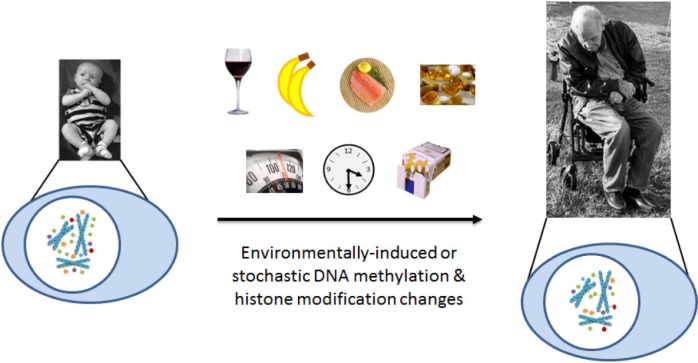Figure 2.
Epigenetics in aging and age-related disease. Stable epigenetic marks may be the link between genetic and environmental processes involved in the development of age-related diseases, such as AMD. Environmental influences contribute to epigenetic changes that accumulate with age. Risk factors, such as diet, obesity, smoking, sun exposure, and age, may elicit epigenetic changes that accumulate over a lifetime, eventually resulting in altered expression of genes involved in the disease process. These environmental influences contribute to epigenetic modifications, such as DNA methylation (green ovals), histone methylation (purple pentagons), histone acetylation (orange pentagons), histone ubiquitination (blue pentagons), and histone phosphorylation (red pentagons). The epigenetic changes that accumulate throughout the genome may associate with transcriptional changes at the affected genomic loci. Such expression changes at disease-relevant loci may promote either protection against or progression of age-related disease. The sum of these effects over time may then perturb the normal, healthy homeostasis enough to result in the development and/or progression of diseases such as AMD.

